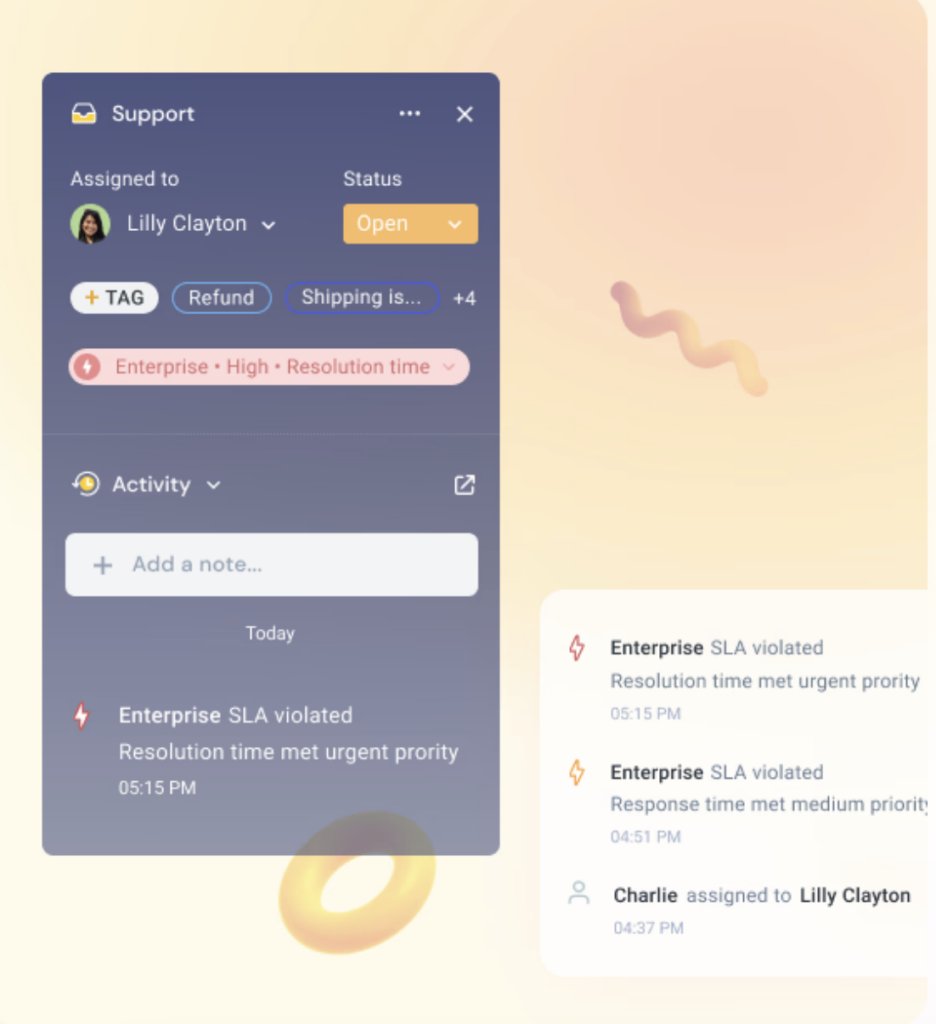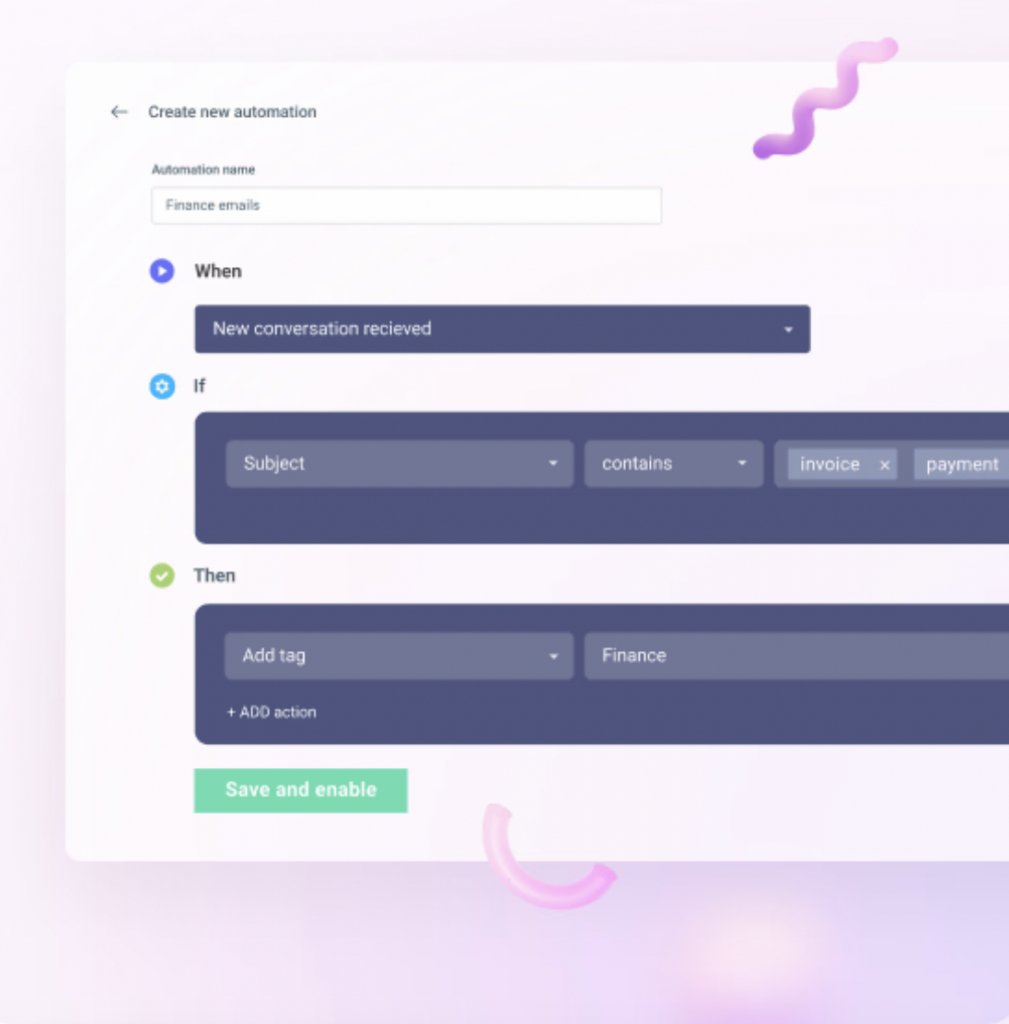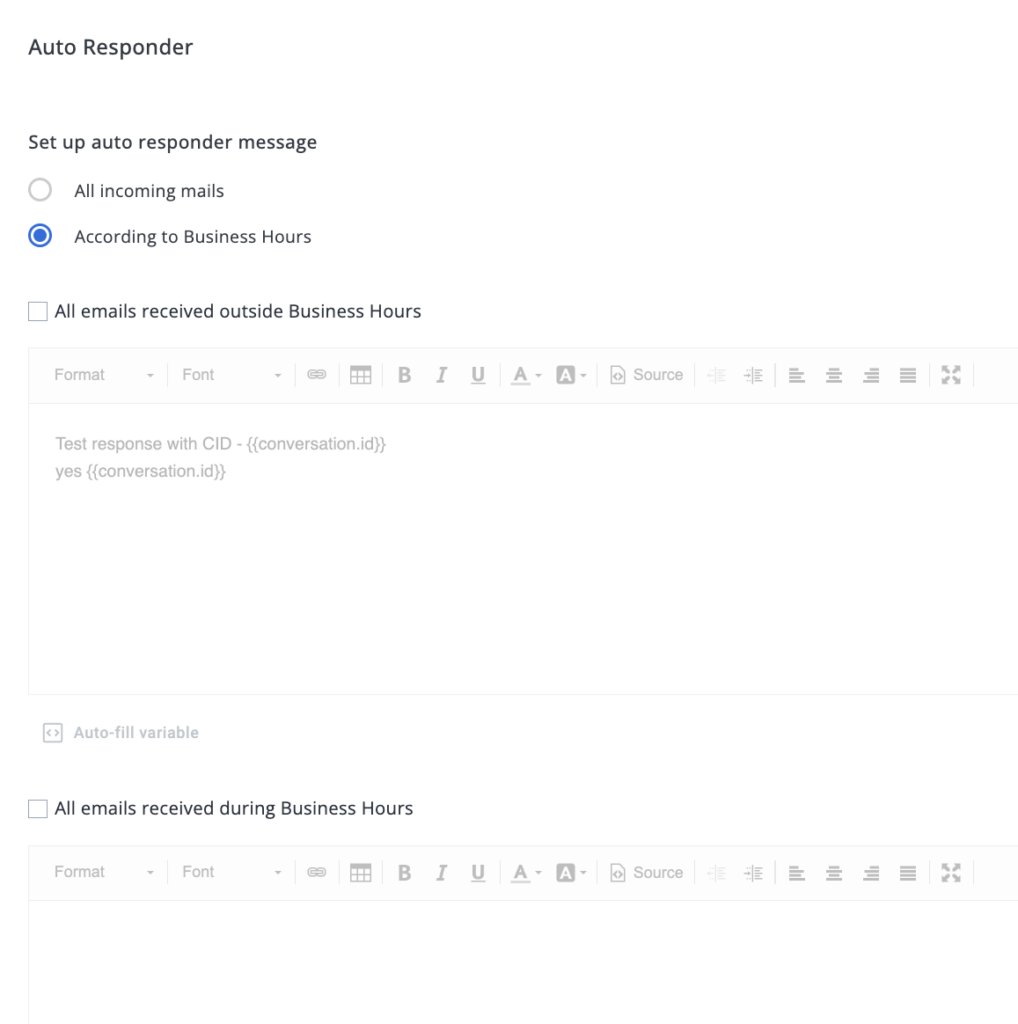5 Help Desk Workflow Automations to Improve your Productivity

Table of contents
Anybody who works in customer support knows how chaotic and demanding the profession is. Most of your work involves high pressure situations. You’re communicating with customers who are either dissatisfied with your product or service or are having trouble using it. And it’s up to you to reassure them and solve their issue.
In order to do this effectively, you’ll need all the help you can get. Having automated help desk workflows in place can help you cut down on the amount of manual tasks you do. This, in turn, ensures the support team can focus on high-priority customer cases, and work that creates true impact.
Moreover, automated help desk workflows ensure that you eliminate any possibility of ‘human errors’. For example, no incoming email goes unattended and queries get assigned to the right person in the right department. These automated workflows ensure that customers receive prompt and accurate assistance, ultimately contributing to a more streamlined and reliable customer support experience.
In this blog, we’ll discuss:
- What is a help desk workflow?
- 5 help desk workflow automations
- The benefits of automating help desk workflows
What is a Help Desk Workflow?
A help desk workflow is a structured way of handling customer queries and technical issues. It’s essentially a step-by-step plan that helps support teams organize and solve problems efficiently. The workflow offers insights into each task (eg: assigning or tagging customer tickets) detailing every step of the process and making sure everything is done in a consistent and timely manner.
Not only does this improve the efficiency of support teams but it also ensures that customers get timely support.
5 Help Desk Workflow Automation Ideas for Your Team
Let’s look at 5 help desk workflow automations that can help your team improve their efficiency and boost customer experience –
1. Automated Ticket Routing Workflow
Manually assigning incoming tickets to individual agents can be time-consuming and hectic. On top of that, there’s a high chance that queries get missed or work gets distributed unequally in such a way that some agents are assigned more tickets than others.
By automating the assignment of incoming tickets, you take care of this problem. With a suitable help desk software, you can ensure that your agents are assigned work automatically, eliminating the need to do it manually. This way your agents are clear on what they need to do, work is distributed equally, and no tickets go unseen.
With Hiver, for instance, you can specify certain conditions based on which all incoming queries can be automatically assigned to specific team members. Say, your team has two finance specialists – Rajiv and Steve. You can set up a condition where all incoming queries that contain any of the words – refund, discount, or payments will automatically be assigned to either Rajiv or Steve.
Check out the screenshot attached below to understand how simple setting up this automation is. It’s a simple “if-then” statement.

Another great way to ensure each incoming email gets a dedicated owner and that emails are distributed equally is by setting up round-robin assignments. This means you can set up a queue of people among whom all incoming queries get distributed in order. If there’s three people in the queue A,B, and C, A will be assigned the first ticket, B the next, and C the one after that.
Those in the queue can also control their availability. So if they’re temporarily away from work, tickets will only get assigned to those available.

2. Automated CSAT Surveys Workflow
Customer Satisfaction (CSAT) surveys are a great way to measure how satisfied a customer is with your business after a purchase or an interaction. Any good help desk software lets you automate your CSAT surveys so that you can auto-send these surveys based on certain triggers.
Some instances where you can automate CSAT surveys include:-
- After customer support interactions – Automate a CSAT survey right after a customer’s query has been resolved. This helps support teams immediately understand what customers think about the quality of support they receive.
For example, you can ask a question such as ‘How satisfied are you with the interaction you’ve had with our support team?’ and ask customers to answer it on a scale of 1-5.
- After critical lifecycle moments – By critical lifecycle moments I mean something like customer onboarding. Once you’ve onboarded a new customer, you can send a survey with a question like – “On a scale of 1 to 10, how satisfied are you with the onboarding experience?”. With a single click, the customer can communicate how smooth or choppy their experience was.
- Once every quarter – This can be a general hygiene check to gauge how your customers are feeling and if they’re facing any problems. This is a proactive approach on your end which shows the customers that you value them. A simple question like “On a scale of 1-10, how satisfied are you with your membership?” goes a long way to giving you insight into their mindset.
With Hiver, you can completely control how your survey looks and what you want to know from customers. The platform offers detailed but easy-to-setup customizations.

You can also view your customers’ feedback in real-time dashboards. This allows you to track your team member’s performance and quality of support delivered. With access to this information, you can acknowledge and reward your agents who are performing well and focus on improving the performance of others who may be lagging behind.

3. SLA Notification Workflow
Service Level Agreements (SLAs) define the level of service customers can expect from your company in terms of quality and timeliness. They help you set expectations on how quickly your team should respond to customer queries and resolve them. This way, they keep your support agents accountable as they know they have time limits within which they have to respond to or resolve customer queries. Additionally, SLAs help you manage customer expectations better as your customers know WHEN they can expect a response.
You can set up a helpdesk workflow where – as soon as an SLA policy is violated by an agent (the time limit lapses),a notification gets sent to the relevant stakeholders automatically informing them about this.
Next, the manager can check in with the assigned agent to understand why there’s a delay and if needed, reassign the ticket to another agent. The fact that the manager is immediately informed of the violation and can take steps to solve the issue quickly ensures there’s not too long a delay for the customer.

Say for example, a customer submits a support ticket with an issue that needs urgent attention and the SLA has been lapsed. Upon receiving the notification, the manager can promptly check in with the assigned agent to understand the reason for the delay. Let’s say the agent encountered an unexpected complexity in the issue or required additional information from another department. The manager, armed with this insight, can take quick action, whether it be providing necessary resources or reassigning the ticket to another available agent who can expedite the resolution.
This immediate response to the SLA violation ensures that there’s minimal disruption and the customer doesn’t have to wait too long.
4. Automated Tagging Workflow
If you want to organize your incoming tickets in a manner that makes it easier for you to locate them or prioritize them, tags come in handy. For example, support teams can categorize customer queries by type or priority, without manual effort.
How? You can set up a helpdesk workflow by creating rule-based automations so that all incoming tickets will automatically be tagged.
With Hiver, for instance, you can set up a condition that any incoming ticket that contains the keywords invoice or payment in the subject line will be automatically tagged as FINANCE. Then if you want to later look for finance-related tickets, simply filter by tags. Another use case for this, as mentioned before, is that you can build a workflow where tickets are categorized based on priority.
For example, all tickets from a specific client (john@abc,com),can be tagged as HIGH PRIORITY.

5. Automatic Responses Workflow
The automatic response workflow comes in handy during holiday seasons, like Christmas when your team is not working at full capacity or is on holiday. In such cases, to ensure that your customers are kept in the loop and know when to expect a response from you, you can set up auto-responders in your help desk.
Pro tip: This workflow works great along with the automatic tagging and assignment workflows because when your team gets back from their break, they don’t have to come back to an overwhelming, messy inbox. They know what to work on, all the emails are sorted under tags, and customer expectations have been managed by the auto-responses sent to them from your inbox.
With Hiver, you can set up an automatic response for all incoming queries or set two different versions – one for those coming in during business hours and one for those outside business hours. This is helpful for short-staffed customer support teams.

Benefits of Automating Help Desk Workflows
Here are the key benefits of automating help desk workflows:
- Reduction in human errors – One of the biggest benefits of automating help desk workflows is that you’re able to minimize procedural and resolution errors. I’ve mentioned this before but the simple example of manually assigning tickets to agents and how sometimes teams can miss out on certain tickets is something that you can avoid.
- Increased efficiency of support team – Automating help desk workflows directly enhances the internal efficiency of your support team. By freeing agents from performing routine and time-consuming tasks, such as ticket categorization and assignment, they can dedicate more time to resolving high-priority issues and focus on providing world-class support.
- Better Customer Experience – Automated help desk workflows play a key role in elevating the overall customer experience as well. Lesser errors and more efficient support teams leads to prompt, helpful responses and faster resolutions.
Get Started
Ready to streamline your support operations and get the most out of your agents? Try Hiver for free and help your team automate basic help desk workflows so that they can prioritize customer experience and quality of support.

































